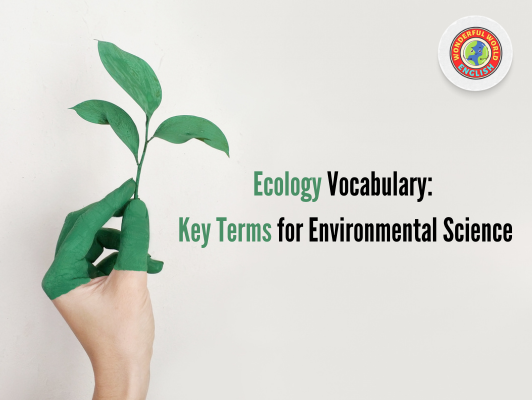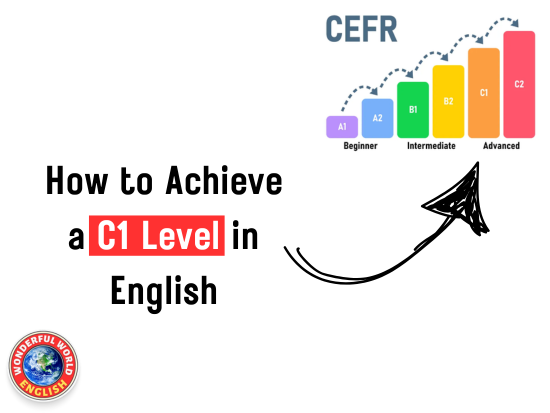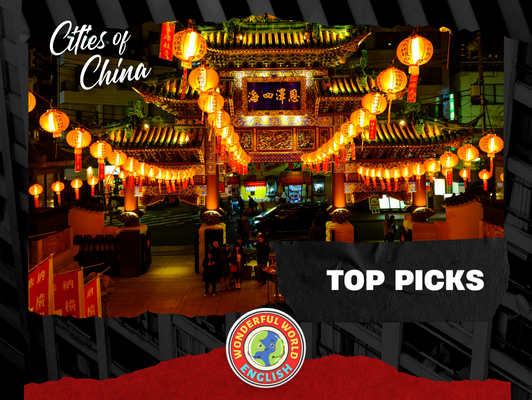Contents
Toggle
Meet David De’ Ath, founder, editor, and writer at Wonderful World English. With his extensive background as an English teacher, David provides valuable insights and practical tips on ESL for students and teachers alike.
Ecology is the scientific study of interactions among organisms and between organisms and their environment.
It encompasses a vast array of concepts that explain how numerous forms of life coexist and affect each other and their surroundings.
Biodiversity, a term that refers to the variety of life forms in a given area, is integral to these ecological studies.
The health and stability of an ecosystem heavily depend on its biodiversity, which ensures resilience against disturbances and provides a greater range of ecological services.
Understanding ecology requires familiarity with its specific vocabulary. Terms like ecosystem, population, and niche are foundational.
An ecosystem can be as small as a drop of water or as large as a desert, entailing not only the biological community of organisms but also the physical space and resources they share.
A population is a group of organisms of the same species inhabiting a particular area, while a niche refers to the role an organism plays within its community, its ‘job’ within the ecosystem’s complex web.
The interactions within an ecosystem are dynamic and can include relationships such as predation, competition, and mutualism.
These interactions are crucial for the flow of energy through food chains and food webs and establish an intricate balance among species.
Understanding these ecological concepts helps reveal the delicate interplay that sustains life on Earth, emphasizing the importance of conservation efforts to maintain environmental equilibrium.
Fundamental Concepts of Ecology
In ecology, understanding how organisms coexist and interact with their environment is key.
This involves examining both the living and non-living elements that constitute ecosystems, the flow of energy and matter through these systems, the intricate web of ecological relationships, and the study of populations and communities.
Ecosystem Components
An ecosystem is composed of all living organisms (species, communities) and non-living (abiotic) factors within a defined area.
Each organism plays a role, often categorized within trophic levels, which describe their position in the energy flow—from producers to apex predators.
Biodiversity within an ecosystem is a hallmark of its complexity and health, showcasing a range of interdependencies.
- Biotic Factors: These include all living organisms within the ecosystem, from single-celled bacteria to complex multicellular life such as plants and animals.
- Abiotic Factors: Non-living elements like water, temperature, sunlight, minerals, and air contribute to the environment’s conditions.
Energy Flow and Nutrient Cycles
Energy in an ecosystem typically enters through photosynthesis and flows from producers to consumers and decomposers in a trophic structure.
Each level in this structure is dependent on the level below it for energy.
Nutrients cycle through ecosystems via biogeochemical cycles, ensuring the sustainability of these systems.
- Photosynthesis: Initiation of energy flow.
- Nutrient cycles: Carbon, nitrogen, and phosphorus cycles maintaining ecosystem health.
Population and Community Ecology
Population ecology examines individual species’ populations, while community ecology looks at the multiple coexisting species.
Factors affecting population dynamics include birth and death rates, immigration, and emigration, while community ecology focuses on species richness and interactions that contribute to the overall biodiversity.
- Populations: Groups of individuals of the same species living in an area.
- Communities: Different populations living together and interacting in an area.
Ecological Interactions
In any ecosystem, organisms are interdependent, relying on each other for food, shelter, pollination, and more.
These interactions can be predation, competition, or symbiotic relationships and each has implications for population dynamics and community structure.
- Predation and Competition: Dynamics that can control population sizes and distributions.
- Symbiosis: Mutualism, commensalism, and parasitism illustrating reliance and effects on partners.
For a guide on how to take your vocabulary to the next level, check out the link below!
Related: How to Improve Vocabulary in 30 Days: Ultimate Guide
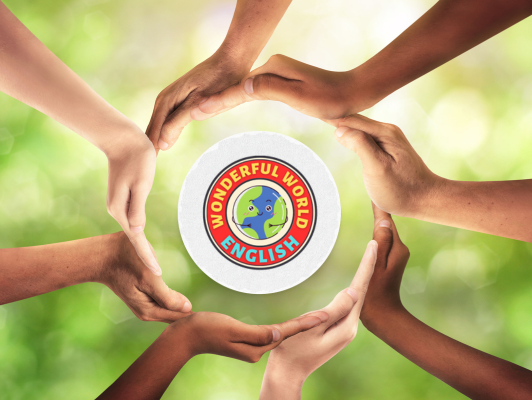
| Term | Definition |
|---|---|
| Ecology | The scientific study of interactions among organisms and between organisms and their environment. |
| Biodiversity | The variety of life forms in a given area, contributing to the health and stability of an ecosystem. |
| Ecosystem | A community of living organisms and their physical environment interacting as a system. |
| Population | A group of organisms of the same species inhabiting a particular area. |
| Niche | The role an organism plays within its community, including its habitat, resource use, and relationships with other organisms. |
| Biotic Factors | All living components of an ecosystem, including plants, animals, fungi, and microorganisms. |
| Abiotic Factors | Non-living elements of an ecosystem, such as water, temperature, sunlight, minerals, and air. |
| Trophic Levels | The hierarchical levels in an ecosystem, comprising producers at the base and successive levels of consumers and decomposers. |
| Energy Flow | The transfer of energy through an ecosystem, from primary producers to various consumers and decomposers. |
| Nutrient Cycles | The movement and exchange of organic and inorganic matter back into the production of living matter, such as the carbon, nitrogen, and phosphorus cycles. |
| Photosynthesis | The process by which green plants and some other organisms use sunlight to synthesize foods with the help of chlorophyll. |
| Predation | An interaction where one organism (the predator) kills and eats another organism (the prey). |
| Competition | The interaction between organisms or species that vie for the same resources in an ecosystem, such as food or living space. |
| Mutualism | A symbiotic relationship where both species benefit from the interaction. |
| Commensalism | A symbiotic relationship where one species benefits while the other is neither helped nor harmed. |
| Parasitism | A symbiotic relationship where one organism (the parasite) benefits at the expense of the other (the host). |
| Sustainable Agriculture | Farming practices that meet current food needs without compromising the ability of future generations to meet their needs. |
| Carrying Capacity | The maximum population size of a species that an environment can sustain indefinitely. |
| Integrated Pest Management (IPM) | A pest control strategy that uses an array of complementary methods to reduce pest damage to acceptable levels while minimizing environmental impact. |
| Urban Ecology | The study of ecological processes in urban environments and the effects of urbanization on ecosystems. |
| Green Infrastructure | Strategically planned networks of natural and semi-natural areas that provide ecosystem services and improve urban environments. |
| Sustainable Resource Management | Practices that aim to use and manage resources in a way that meets current needs without compromising the ability of future generations to meet theirs. |
Ecology’s Application in a Human Context
Ecology informs human practices, planning, and policy aimed at sustainable use of resources.
It applies scientific principles to optimize the relationships between people and their environments.
Agriculture and Ecology
Ecology plays a critical role in agriculture by guiding the development of sustainable farming practices.
Sustainable agriculture aims to meet current food needs without compromising future generations.
Key ecological concepts such as carrying capacity—the maximum population size that an environment can sustain—inform decisions about land use and crop rotation.
Practices like integrated pest management (IPM) rely on ecological principles to control pests while minimizing harm to the environment.
- Crop Diversity: Increases resilience to pests and diseases.
- Soil Health: Maintains nutrient cycles vital for plant growth.
- Water Conservation: Ensures availability of water for agriculture and other needs.
Urban Ecology
Urban areas illustrate complex ecological dynamics, heavily influenced by human activities.
Urban ecology studies these interactions, focusing on sustainability and the quality of life in cities.
It addresses how urban development affects local ecosystems and devises strategies to create urban spaces that support both human well-being and biodiversity.
For instance, the inclusion of green spaces in urban planning has been shown to improve air quality and provide necessary habitats for urban wildlife.
- Green Infrastructure: Includes parks and green roofs, which serve to manage stormwater and reduce the urban heat island effect.
- Transportation: Efficient public transport reduces emissions and helps in maintaining cleaner urban air.
Ecology in Resource Management
Ecology informs the management of natural resources to prevent depletion and ensure long-term availability.
Effective resource management relies on understanding ecological limits and the concept of sustainability.
Population growth increases the demand for resources, which makes the preservation of ecosystems even more crucial.
Sustainable resource management strategies include the use of renewable energy sources, rationalized mining practices, and the protection of forests and waterways to safeguard biodiversity.
- Energy Conservation: Encourages the use of renewable over non-renewable energy sources.
- Responsible Mining Practices: Minimize damage to surrounding ecosystems and water resources.
Related: Water Cycle Vocabulary: Key Terms Explained
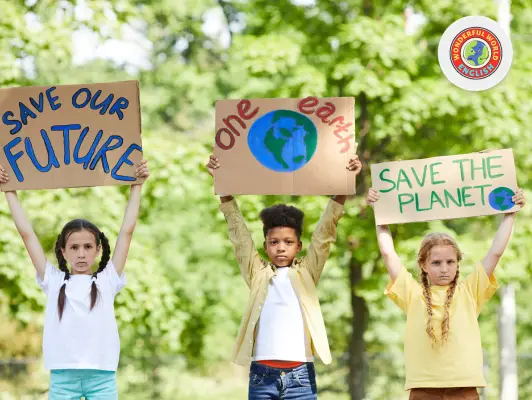
Conclusion
Ecology, as the science of interactions between organisms and their environments, introduces a specialized vocabulary essential for students and professionals in environmental sciences.
Grasping this vocabulary is not just about memorizing terms, but about understanding the roles and relationships that define ecological systems.
This guide provides an overview of fundamental ecological terms that form the basis of environmental studies.
From the roles organisms play in their ecosystems to the dynamics of energy flow and nutrient cycling, these terms are crucial for anyone looking to deepen their understanding of the natural world.
The included table outlines key ecological concepts and terms along with their definitions, serving as a handy reference for learners.
This resource aims to enhance comprehension and provide a clear framework for discussing and analyzing ecological phenomena.
Whether you are a student preparing for exams, a teacher developing lesson plans, or a professional engaged in environmental management, familiarizing yourself with this vocabulary will enrich your understanding of how ecosystems function and the importance of biodiversity and conservation.
We hope you find value in this information.
You can contact us if you are in need of any assistance.
Have a wonderful day!
Image Attribution: All images licensed via canva.com


